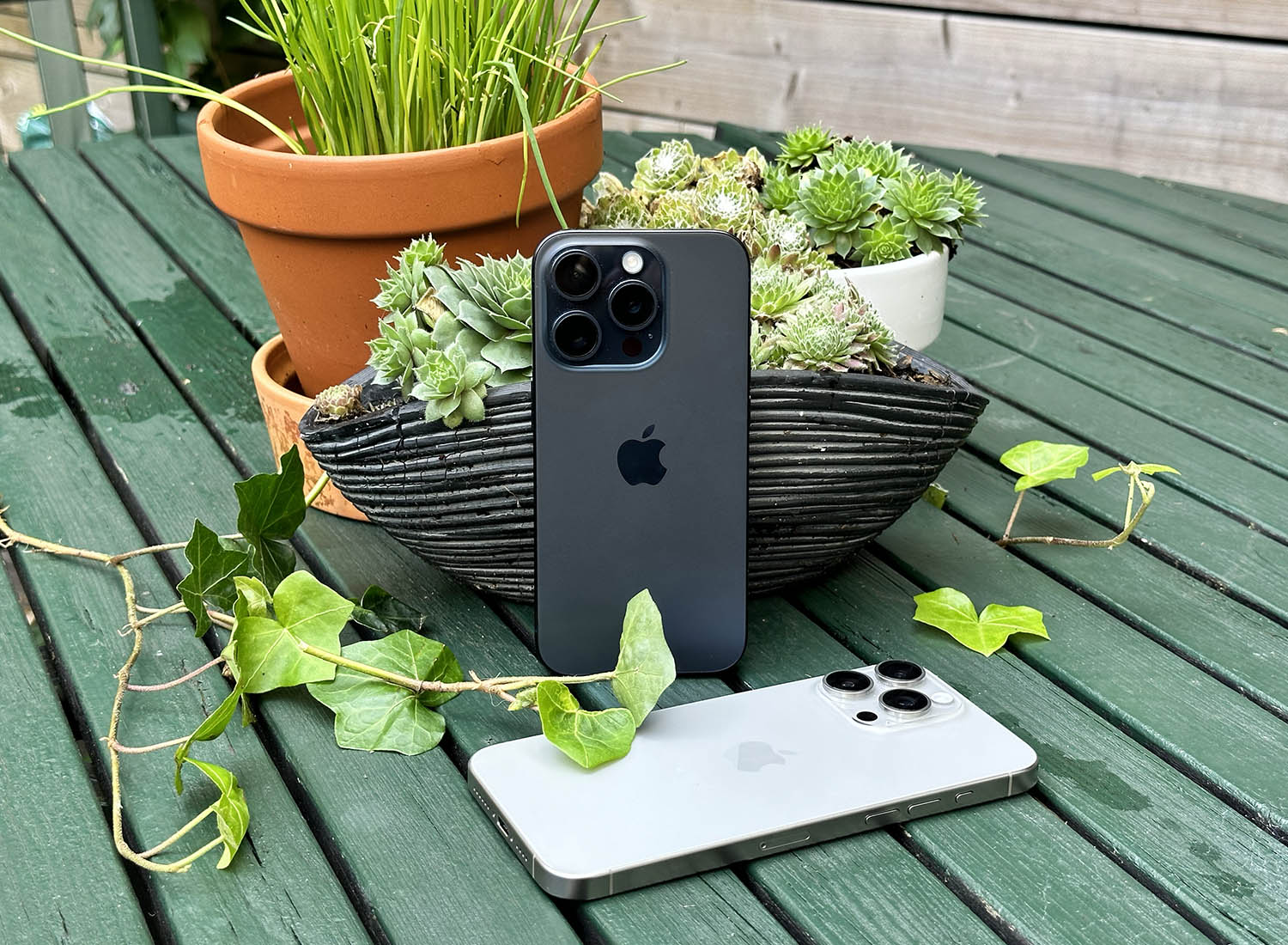When choosing a new iPhone, the screen size plays an important role. A larger screen has several advantages: it is easier to read and more space fits on the screen. But it also has a number of disadvantages and there are technical differences. We help you with your choice by making the considerations clear.
- Current screen sizes
- Future screen sizes
- Why choose a smaller iPhone screen?
- Why choose a larger iPhone screen?
Current iPhone screen sizes
In recent years, Apple has released a series of fixed screen sizes. This involves measuring diagonally from corner to corner:
| Screen size | devices |
| 4.7-in | iPhone SE 2020/2022 |
| 5.4-in | iPhone 13 mini iPhone 12 mini |
| 6.1-in | iPhone 15 / iPhone 15 Pro iPhone 14 / iPhone 14 Pro iPhone 13 / iPhone 13 Pro iPhone 12 / iPhone 12 Pro iPhone 11 |
| 6.7-in | iPhone 15 Plus / iPhone 15 Pro Max iPhone 14 Plus / iPhone 14 Pro Max iPhone 13 Pro Max iPhone 12 Pro Max |
Previous devices had a screen size of 5.5-inch, 5.8-inch and 6.5-inch. At the moment, 6.1-inch has become the standard and you can go to the 6.7-inch models for larger screen sizes. But that is also about to change.
Future iPhone screen sizes
For the iPhone 16, larger screen sizes of 6.3-inch and 6.9-inch are mentioned, but this does not apply to all models. The line-up would then look like this:
- 6.1-inch iPhone 16
- 6.7-inch iPhone 16 Plus
- 6.3-inch iPhone 16 Pro
- 6.9-inch iPhone 16 Pro Max (or iPhone 16 Ultra)
There will therefore be a greater variation in screen sizes. Furthermore, there has been talk for years about a foldable or rollable iPhone screen, which could be considerably larger.

Benefits of a smaller iPhone screen
If you choose a smaller iPhone screen of 4.7-inch, 5.4-inch or 6.1-inch, you will have the following advantages:
- The device fits more easily in your pocket.
- Smaller devices are often cheaper.
- Smaller screens often have a higher pixel density (text on the screen appears sharper).
- A smaller device can easily be operated with one hand, your thumb can reach all the buttons on the screen.
- Standard size devices are often more common, allowing you to buy more accessories, for example.
- Standard size devices are easier to sell second hand because they are in greater demand.
There are also some disadvantages. For example, the battery life is not as good as with devices with a larger screen. And the screen edges also play a role: the 5.4-inch iPhone mini models are much more compact than the 4.7-inch iPhone SE models. This is because the screen edges on the minis are much narrower and the Touch ID button under the screen is missing, so that more optimal use can be made of the front part.

Benefits of a larger iPhone screen
If you choose the iPhone screen size of 6.7 inches and the possible future size of 6.9 inches, this has the following advantages:
- More information can fit on a larger screen.
- Text is easier to read, especially if you set large fonts. That saves the need for reading glasses.
- Devices with larger screens often also have a higher battery capacity and a longer operating time.
- Larger devices sometimes have additional features, such as the 5x zoom on the iPhone 15 Pro Max camera.
However, a larger iPhone is not suitable for everyone, because such a large device can be less comfortable to hold, is more expensive and does not always fit in your pocket. However, something has been done about this on the iPhone 15 Pro models: the edges are slightly more rounded, so that you can hold the larger model a little better.
Read further:
- What screen size is my iPhone?
- Apple’s screen technology for iPhones explained
Are you ready to choose the iPhone that’s right for you? Then check out our overview of buying a new iPhone, in which you will see a round-up of all current devices!














